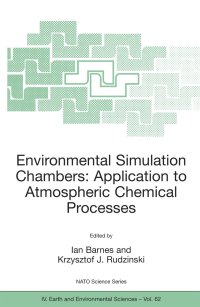
Ebook: Environmental simulation chambers: application to atmospheric chemical processes
- Tags: Atmospheric Protection/Air Quality Control/Air Pollution
- Series: NATO Science Series: IV. Earth and Environmental Sciences #62
- Year: 2005
- Publisher: Springer Netherlands
- Language: English
- pdf
Atmospheric pollution has many different detrimental impacts on air quality at urban, regional and global scales. Large volume photoreactors (often referred to as smog or simulation chambers) have been used very effectively to investigate and understand many varied aspects of atmospheric chemistry related to air pollution problems. Photochemical smog formation, which was first observed around 1945 in Los Angeles, is now a major environmental problem for all industrialised and densely populated regions of the world. Over the years many different modelling and experimental tools have been developed to analyse and simulate the complex chemical processes associated with tropspheric photooxidant formation. Work in environmental chambers has played a key role in the development of our understanding of the atmospheric chemistry associated with pollution problems on local, regional and global scales. Chamber observations have also been used in connection with environmental policy issues. In general they are used for validation of atmospheric chemical models, studies of chemical reaction mechanisms and as a direct means to test the possible impact of specific chemical compounds on air quality under simulated ambient conditions New large smog chamber installations have been recently developed in the US (Riverside, California), Europe (Jülich, Germany) and Japan, and a large number of smaller scale laboratory chambers are in operation around the world. Over the years there have been numerous new technical developments related to environmental chamber facilities such as the design of the chambers (e. g.
The book gives in the first instance descriptions of different types of so-called environment chambers or photoreactors used mainly for the simulation and/or investigation of important chemical processes occurring in the atmosphere. The types of reactor described include outdoor and indoor chambers, temperature regulated chambers and glass and Teflon foil chambers The practical use of chambers is demonstrated in contributions by leading scientists in the field of atmospheric chemistry using, in many cases, current results. The types of atmospherically relevant investigations described include the measurement of reactivities, the measurement of radicals, the measurement of photolysis frequencies and products, kinetic and product studies on the oxidation of different types of hydrocarbons by important oxidant species (OH, N03, 03), formation of secondary organic aerosol from hydrocarbon oxidation etc. A special section includes contributions from eastern European countries which highlight some of the environmental research being performed in these countries. An abridged version of a specially commissioned review by the JRC Ispra on the status of environmental research in eastern European countries is also included in this section.